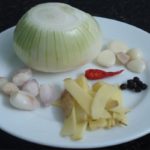Effective Ways to Eliminate Meat Odor
Boiled meat is a simple yet delicious dish that often appears in family meals. Boiled pork can be combined with salted lime, chili sauce, shrimp paste, fish sauce… and can also be used to make other dishes such as rolled meat with rice paper or salad with various vegetables.
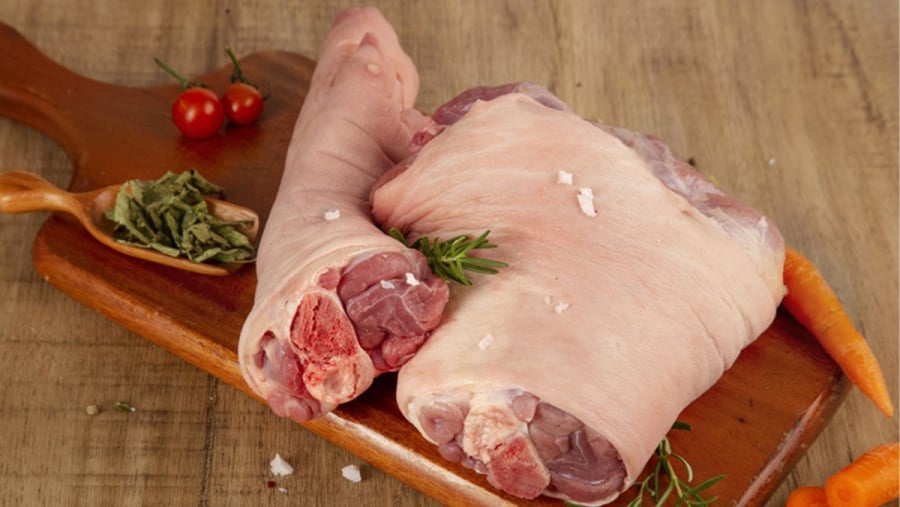
However, when boiling meat, many people still encounter difficulties such as unevenly cooked meat, unpleasant odor, and dull taste. To overcome this problem, you can apply the following tips:
Wash the meat with diluted salt water to disinfect and reduce the meat odor. Choose meat with both lean and fat parts for a delicious boiled meat dish.
Meat from the leg, pork belly… often tastes better than meat from the loin or ham when boiled. Prepare some additional ingredients such as vinegar or lime, a small piece of ginger, a dried onion, and soft string or muslin to make the boiled meat dish more fragrant.
Use string or muslin to tie the meat tightly
To have a beautiful shape when slicing the boiled meat, you can use string or muslin to tightly tie the piece of meat before boiling. By tying the meat along the length of the meat, it will create a beautiful round piece of meat, and after boiling, you can slice it horizontally. The tighter you tie the meat, the better the shape of the meat will be.
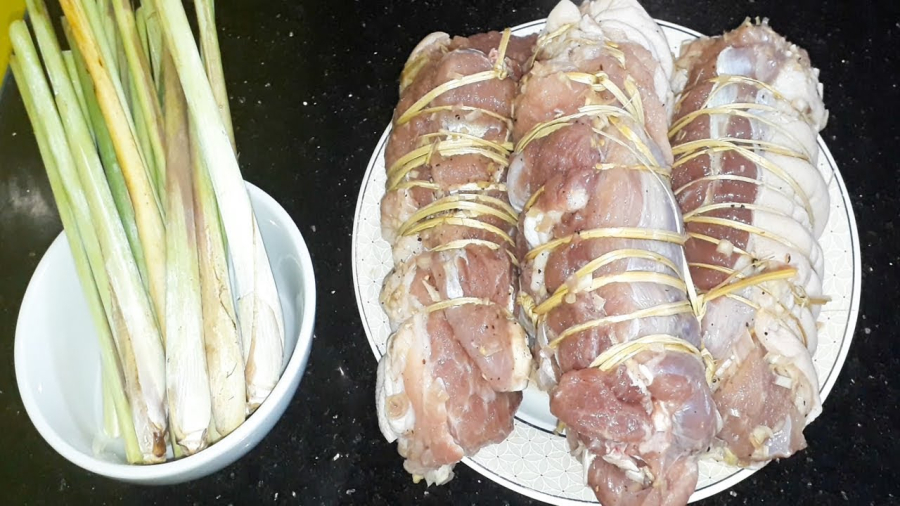
If using string, it is recommended to choose colorless white string. For leg meat, tying it tightly before boiling will result in a more beautiful round shape when slicing it. Pork belly can be boiled without tying. However, if you do not have string or do not want to use it, you can still directly put the meat in the pot to boil.
Why should you boil the meat twice?
To have delicious and odorless meat, you can boil the meat twice. In the first round, place the piece of meat in the pot, pour enough water, and boil for 2-3 minutes. Then, add a few drops of vinegar or lemon juice to the pot to eliminate the odor and make the meat whiter. Next, discard the boiling water, rinse the piece of meat with warm water, and prepare for the second round of boiling.
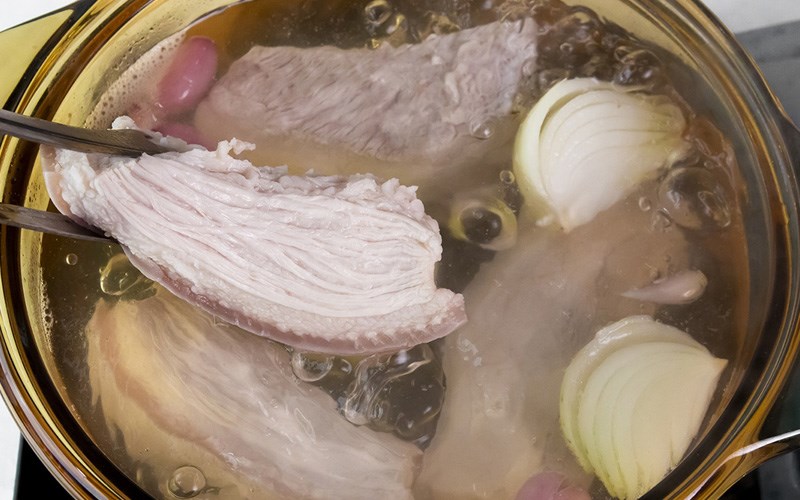
For the second round, prepare a pot of boiling water and put the piece of meat in it along with a pinch of salt, thin slices of ginger, and a peeled dried onion. Boil the pot on low heat and continue boiling the meat until cooked. When cooked, the meat will turn slightly white and become delicious for consumption.
Add salt, ginger, and onion
Salt helps evenly distribute the boiling water, ginger helps eliminate odor, and onion enhances the delicious flavor of the boiled meat. When boiling the meat, simmer it on medium heat until cooked. Check the meat by poking it with a fork. If the meat releases pinkish liquid, boil it for another 5 minutes. If the meat is cooked, the fork will easily penetrate it and there will be no pinkish liquid.
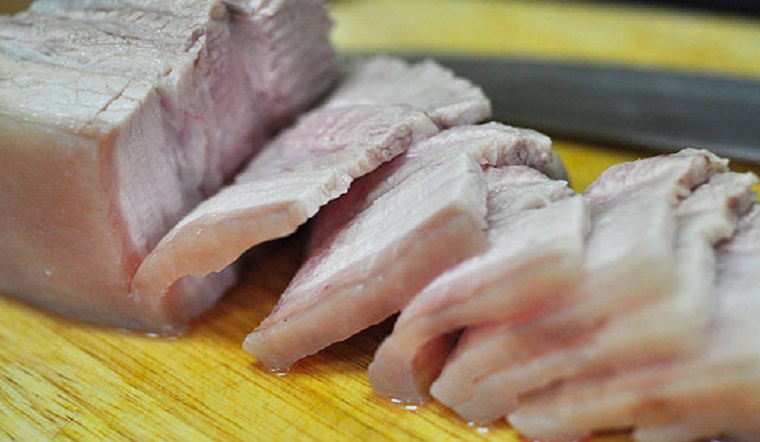
Once the meat is cooked, remove it from the pot and soak it in a bowl of cold water with a few pieces of ice. The cold water helps the meat contract and maintain its shape, preventing it from becoming dry and losing color. After the meat has completely cooled, you can slice it for immediate use.
If you want the meat to be evenly and neatly sliced, you can refrigerate it for a few hours. Before packaging it again, use cling wrap to tightly wrap the piece of meat and refrigerate it for a few hours to make the meat firmer and easier to slice.
More Useful Advice for Homemakers (Part 2)
Have you heard of the surprisingly easy tips to make cooking and household chores simpler? White radish eliminates the acrid taste of salted meat, adding alum to raw shrimp helps soften it, and adding cold water when frying eggs can make them crispy – these are just a few of the tricks to make your life easier.
Ten Strategies to Streamline Your Cooking Process
Are you a busy housewife looking for ways to save time in the kitchen? Did you know that flossing can also help you out? Check out these 10 tips to help you quickly and easily prepare delicious meals for your family. Learn how to peel garlic in 10 seconds and cut cherry tomatoes quickly for a healthy and tasty meal.



























